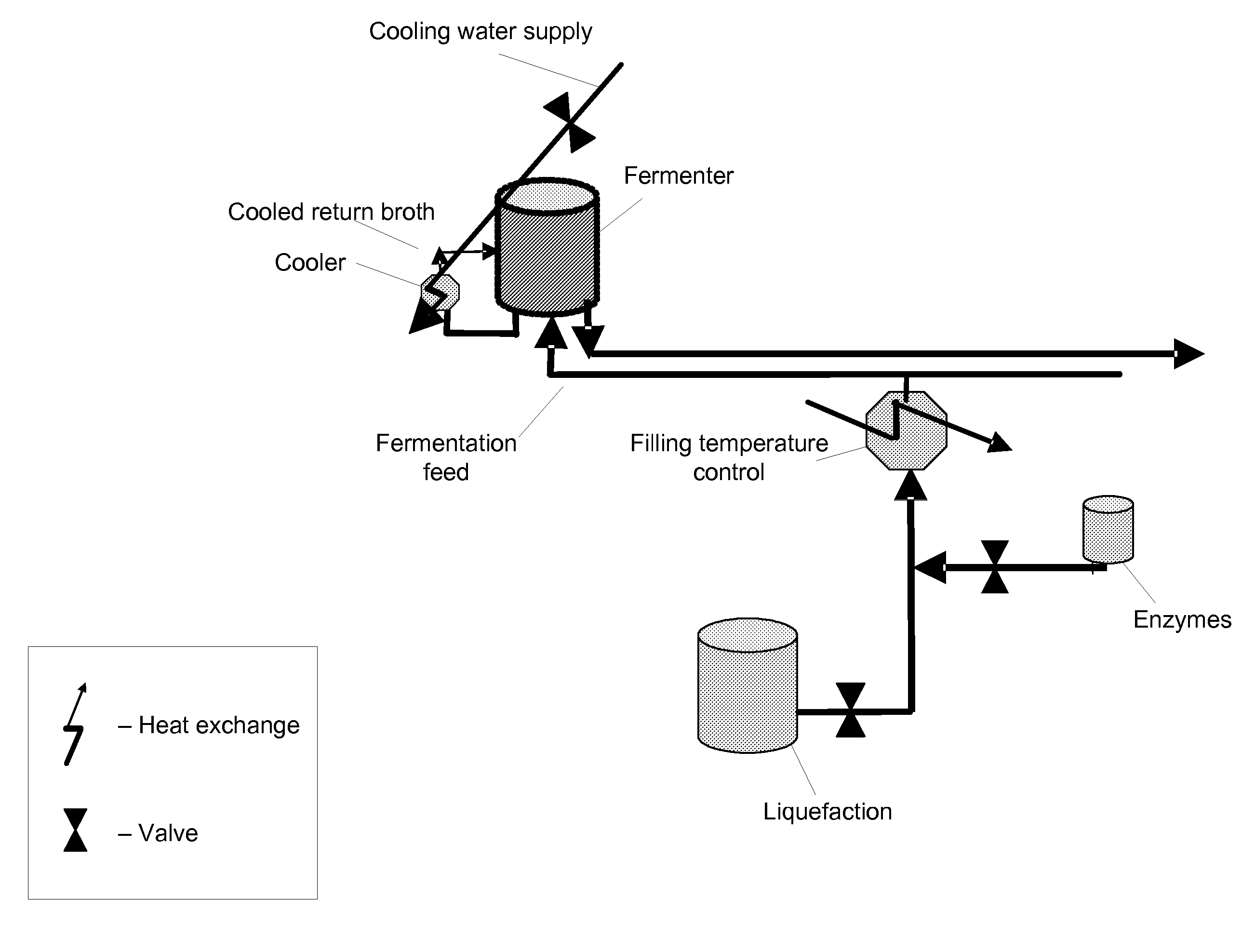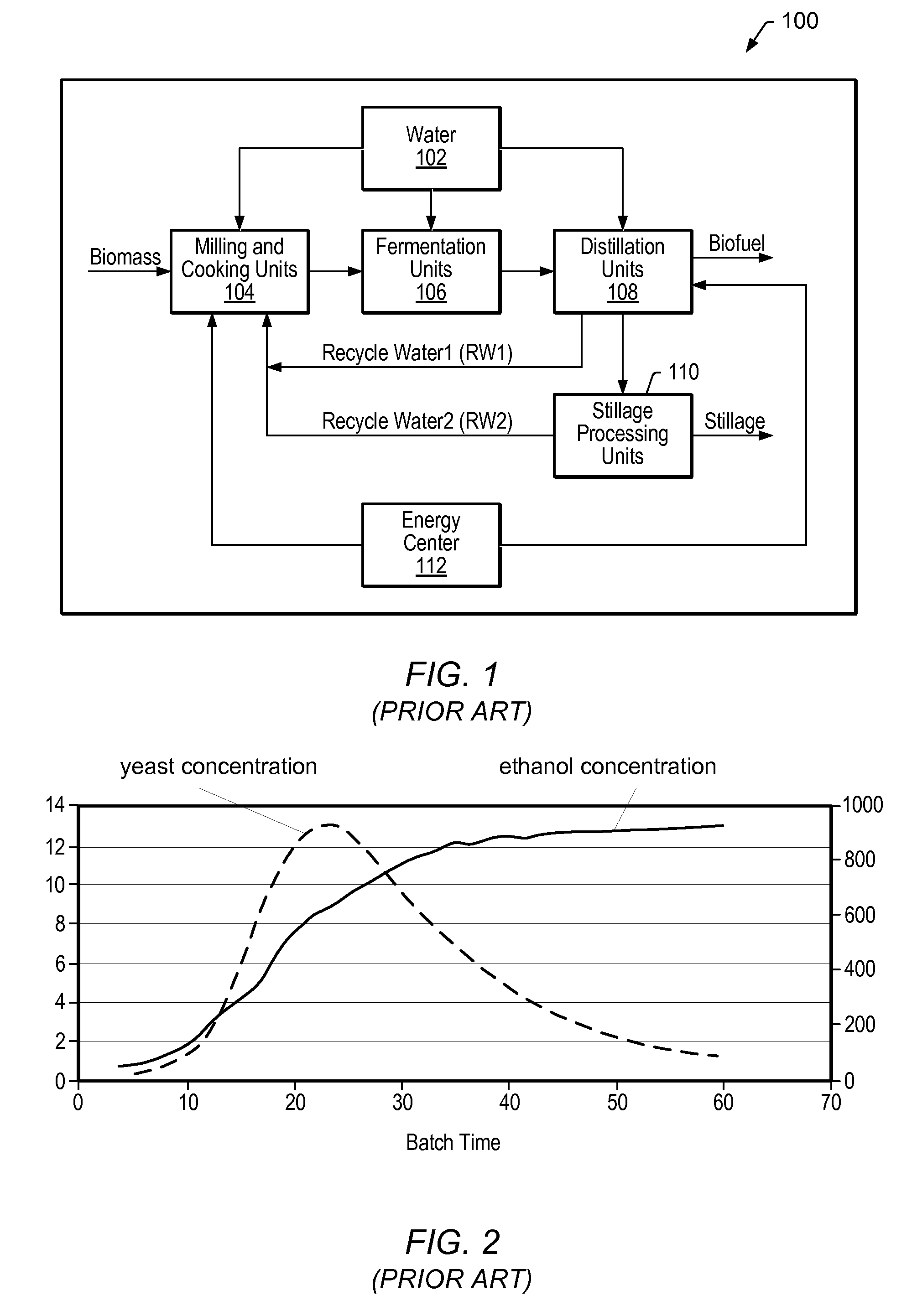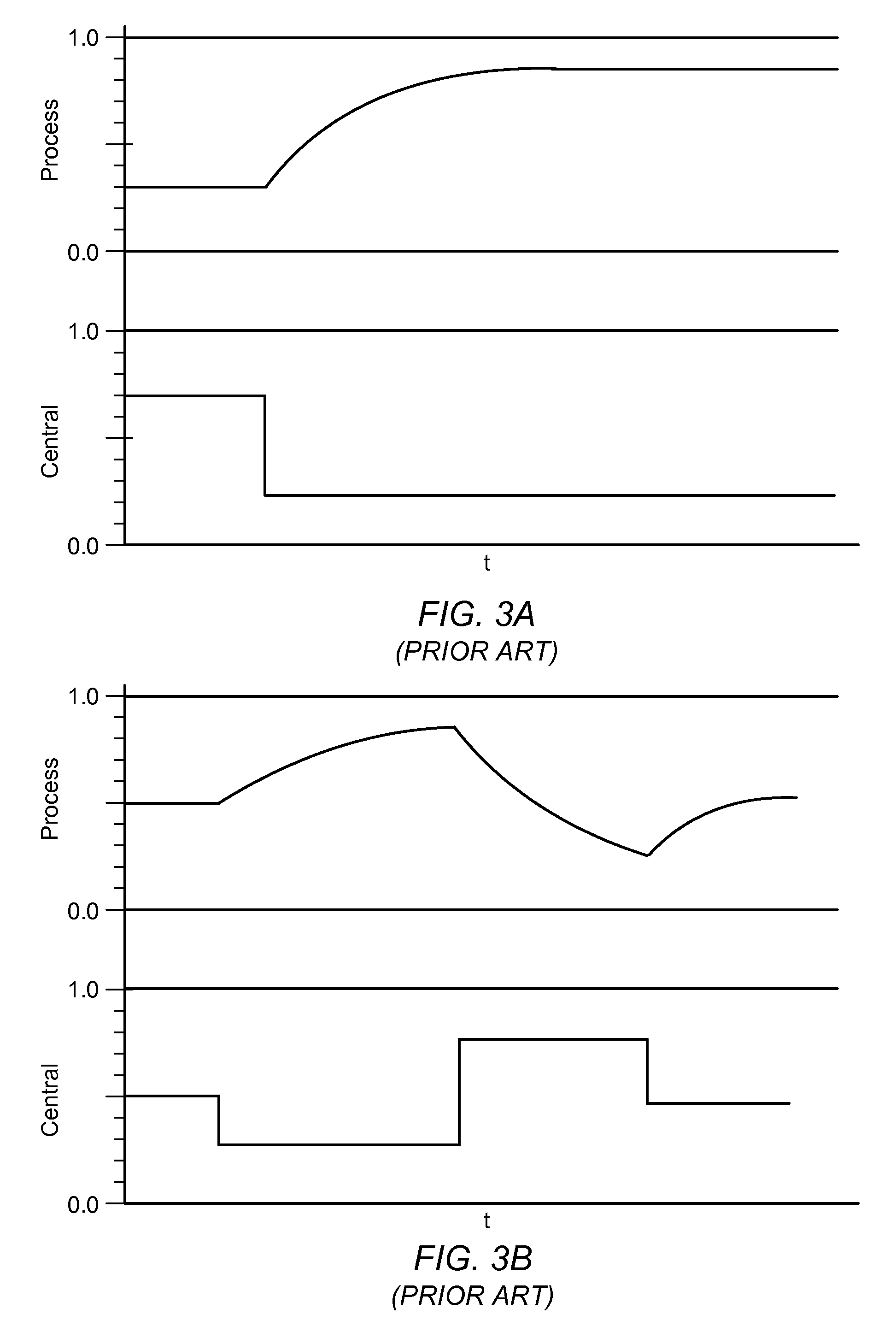Model predictive control of fermentation temperature in biofuel production
a biofuel production and model technology, applied in the direction of adaptive control, electric programme control, instruments, etc., can solve the problems of poor business judgment, inefficient engineering design, and high plant failure rate of achieve the effects of 45% of the 163 existing commercial biofuel plants operating, and reducing the number of production lines
- Summary
- Abstract
- Description
- Claims
- Application Information
AI Technical Summary
Benefits of technology
Problems solved by technology
Method used
Image
Examples
Embodiment Construction
Incorporation by Reference
[0061]The following references are hereby incorporated by reference in their entirety as though fully and completely set forth herein:
[0062]U.S. Provisional Application Ser. No. 60 / 917,916 titled “Nonlinear Model Predictive Control of a Biofuel Fermentation Process” filed May 14, 2007.
[0063]U.S. Provisional Application Ser. No. 60 / 863,759 titled “Model Predictive Control of a Biofuel Production Process” filed Oct. 31, 2006.
DEFINITIONS
Biofuel Production Processes
[0064]Biofuel—any fuel (or fuels) derived from biomass, i.e., from recently living organisms or their bi-products.
[0065]Biofuel production process—a fermentation process surrounded by auxiliary processing units to produce biofuel, other fermentable alcohols for fuel, and high-capacity food grade or chemical grade alcohols.
[0066]Biofuel production—a measure of biofuel production within or at the end of a production process. May include measurements such as concentration (e.g., wt. %, volume % or wt. / v...
PUM
| Property | Measurement | Unit |
|---|---|---|
| temperature | aaaaa | aaaaa |
| nonlinear predictive integrating temperature model | aaaaa | aaaaa |
| volume | aaaaa | aaaaa |
Abstract
Description
Claims
Application Information
 Login to View More
Login to View More - R&D
- Intellectual Property
- Life Sciences
- Materials
- Tech Scout
- Unparalleled Data Quality
- Higher Quality Content
- 60% Fewer Hallucinations
Browse by: Latest US Patents, China's latest patents, Technical Efficacy Thesaurus, Application Domain, Technology Topic, Popular Technical Reports.
© 2025 PatSnap. All rights reserved.Legal|Privacy policy|Modern Slavery Act Transparency Statement|Sitemap|About US| Contact US: help@patsnap.com



